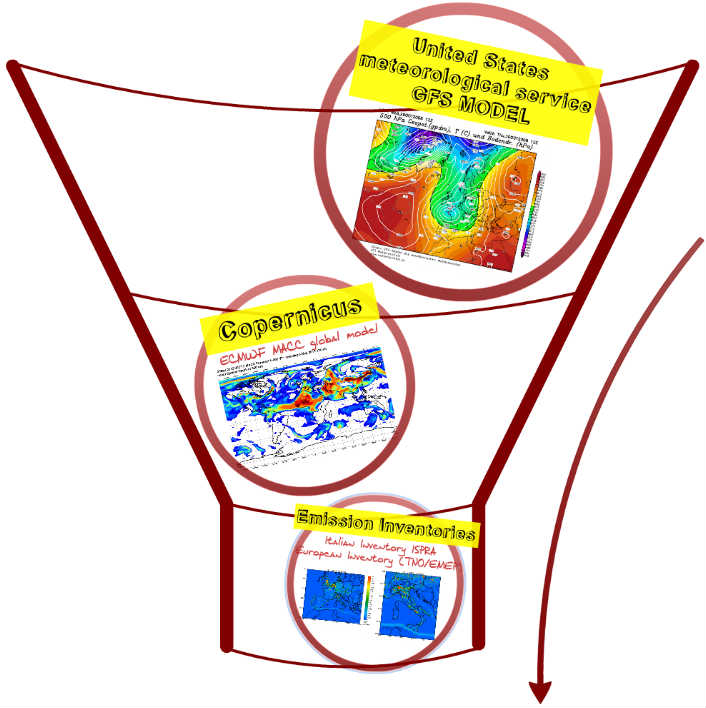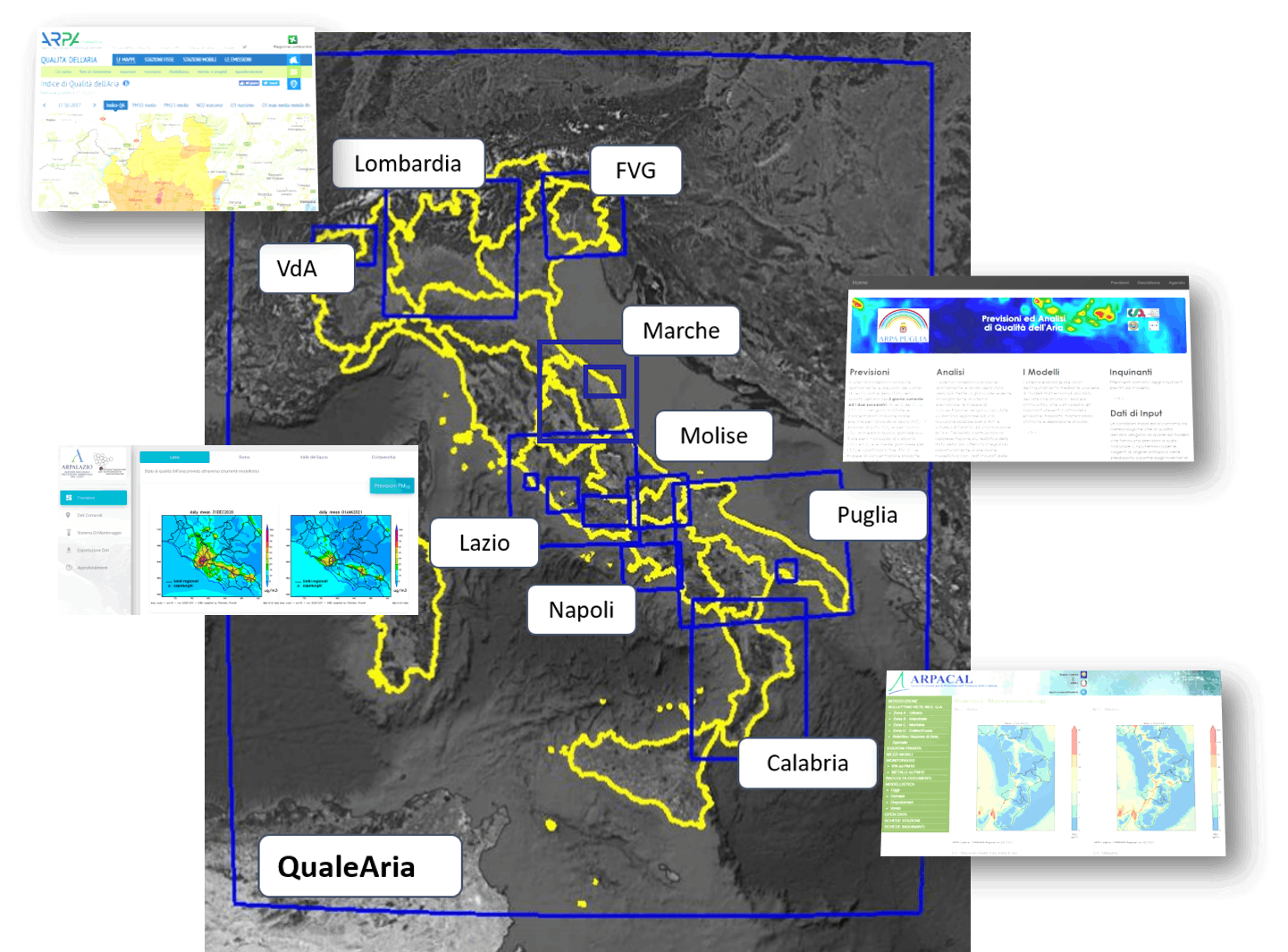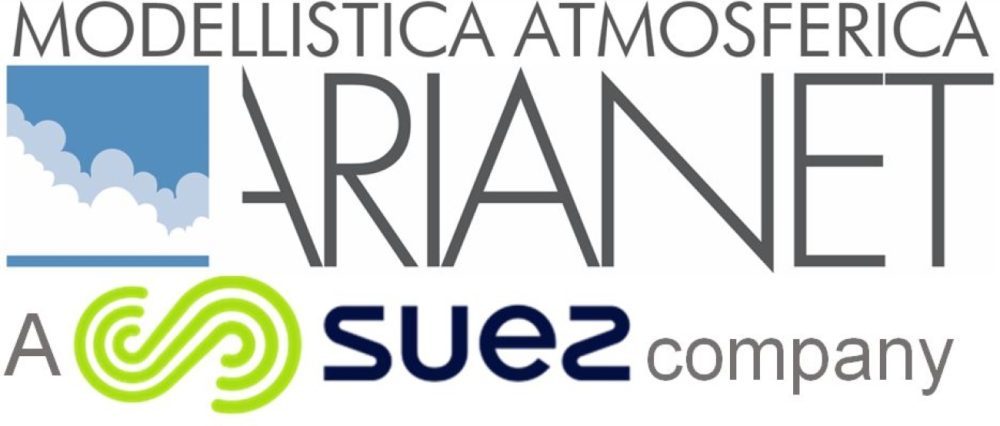QualeAria, since 2009, has been operationally predicting air pollution across the national territory by simulating the chemical and physical processes involving atmospheric pollutants: emission, transport, chemical transformations, and deposition on the ground.
The forecasting is conducted over a 120-hour time window and includes the following key airborne pollutants: SO2, NO2, CO, PM10, PM2.5, O3, and benzene.
System Architecture and Modules of QualeAria
QualeAria is based on the three-dimensional Eulerian model FARM (Flexible Air Quality Regional Model) for pollutant dispersion and chemical reactions in the atmosphere and is managed through F-Air (Arianet Integrated Forecast System Manager), which connects data sources and modeling components within the operational chain.
Key Components:
- WRF (Weather Research and Forecasting): A prognostic model for weather forecasting based on synoptic boundary conditions.
- GAP (Geometric Adjustment Processor): An interface module between the meteorological and dispersion models, responsible for transforming the horizontal and vertical coordinate systems.
- SURFPro: A meteorological processor that calculates parameters describing atmospheric turbulence (vertical and horizontal diffusivity) and dry deposition velocities for gaseous species.
- EMMA: Handles emissions processing.
- Pre-processors: Prepare boundary conditions for the European background domain.
- Post-processors: Process fields generated by FARM to produce parameters necessary for regulatory compliance checks (e.g., daily averages, 8-hour averages), custom data (e.g., boundary conditions for regional forecasting systems), and maps for updating the dedicated website.


Input Data: Boundary Conditions, Initial Conditions, and Emissions
Meteorological Downscaling: The meteorological downscaling in QualeAria is executed using forecast data from the synoptic scale provided by the GFS (Global Forecast System) model, developed by the National Centers for Environmental Prediction (NCEP) of the United States. This model provides comprehensive global weather forecasts that are crucial for deriving accurate local meteorological conditions.
Boundary Conditions for Dispersion Modeling: The boundary conditions for the dispersion model are derived from the global chemical forecasts produced by the MACC-C-IFS-TM5 model, which is managed by ECMWF (European Centre for Medium-Range Weather Forecasts) under the Copernicus program. These forecasts offer valuable insights into global atmospheric composition and provide the necessary boundary conditions for accurate dispersion modeling.
Emissions Data:
- National and European Inventories: Emissions data are sourced from national inventories managed by ISPRA (Italian Institute for Environmental Protection and Research) and European inventories maintained by TNO (Netherlands Organization for Applied Scientific Research). These inventories offer detailed information on pollutant sources, including both point sources (e.g., industrial facilities) and area sources (e.g., urban emissions).
- Natural Emissions: The SURFPro module is responsible for calculating natural emissions. It accounts for natural dust emissions resulting from wind action on soils and seas, as well as non-volatile organic compounds produced by vegetation. This comprehensive approach ensures that both anthropogenic and natural sources are considered in the modeling process, providing a complete picture of atmospheric emissions.
The integration of these data sources enables QualeAria to deliver precise and reliable air quality forecasts, essential for effective environmental management and regulatory compliance.
Products and Services
QualeAria provides boundary conditions to a network of regional and urban air quality forecasting systems created and managed by regional and local environmental agencies. This support aids in monitoring and managing air quality and fulfills the European directives requiring public information on atmospheric pollution conditions.
Forecasting Systems currently connected to QualeAria include:

